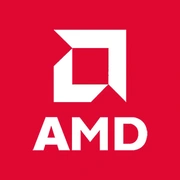AMD Radeon HD 6950M

AMD Radeon HD 6950M: A Retrospective and Relevance in 2025
Let's explore whether this legend of the past is worth considering for modern tasks.
Introduction
The AMD Radeon HD 6950M — a mobile graphics card released in 2011 — became part of the Radeon HD 6000M series for laptops. Despite its venerable age, some users are still interested in its capabilities. In 2025, it is viewed as a relic, but even now it may find application in specific scenarios. We will analyze its specifications, strengths, and weaknesses in the context of modern requirements.
1. Architecture and Key Features
Architecture: The HD 6950M is built on the TeraScale 2 microarchitecture, which at the time provided respectable performance for DirectX 11 and OpenGL 4.1.
- Process Size: 40 nm — by 2025 standards, this is an archaic standard. Modern GPUs are manufactured using 5-7 nm processes, which offer better energy efficiency.
- Unique Features: There is no support for ray tracing, DLSS, or FidelityFX. Among its notable features are PowerPlay technology for optimizing power consumption and Eyefinity for connecting multiple monitors.
Conclusion: The architecture is hopelessly outdated for gaming and tasks in 2025 but can handle basic applications.
2. Memory
- Type and Size: 2 GB GDDR5 — this is insufficient even for minimum settings in modern games (e.g., Cyberpunk 2077 requires at least 4 GB).
- Bandwidth: 160 GB/s. In comparison, even the budget NVIDIA GTX 1650 (2020) offers 192 GB/s.
- Impact on Performance: The limited memory size and speed become a "bottleneck" in rendering complex scenes.
Example: In GTA V (2015) at medium settings, the HD 6950M achieves around 30-40 FPS, but in Red Dead Redemption 2 (2018) the figure drops to 10-15 FPS.
3. Gaming Performance
- 1080p: Only older titles like Skyrim or CS:GO can run (60-90 FPS). Modern esports titles (Valorant, Apex Legends) will operate on low settings at a frame rate of 30-40 FPS.
- 1440p and 4K: Not feasible — lack of memory and computational power.
- Ray Tracing: There is no hardware support. Software emulation (e.g., via DirectX 12) will drop FPS to unacceptable levels.
Advice: For games in 2025, the HD 6950M is not suitable. Consider it only for retro gaming or indie projects.
4. Professional Tasks
- Video Editing: It handles basic editing in Adobe Premiere Pro (rendering at resolutions up to 1080p), but for 4K or effects, at least a Radeon RX 5500 is needed.
- 3D Modeling: In Blender or Maya, performance will be extremely low due to lack of optimization for older architectures.
- Scientific Computing: Support for OpenCL 1.2 exists, but modern SDKs require OpenCL 3.0+.
Alternative: For professional tasks, it is better to choose cards that support ROCm (AMD) or CUDA (NVIDIA).
5. Power Consumption and Heat Production
- TDP: 100 Watts — a high figure for a mobile GPU even in 2025.
- Cooling: An efficient cooling system with 2-3 heat pipes is required. Overheating has often been observed in laptops, which shortened their lifespan.
- Case Recommendations: For desktop modifications (if any exist), a case with good ventilation and a power supply of at least 450 Watts is needed.
6. Comparison with Competitors
- NVIDIA GTX 580M (2011): Comparable in performance but also outdated.
- Modern Analogues:
- AMD Radeon RX 6400 (2025): 4 GB GDDR6, supports FSR 3.0, priced at $150.
- NVIDIA GTX 1630 (2022): 4 GB GDDR6, better optimization for new APIs, priced at $120.
Conclusion: The HD 6950M falls short against even budget newcomers in 2025.
7. Practical Tips
- Power Supply: Minimum 450 Watts with an 80+ Bronze certification.
- Compatibility: Only supports PCIe 2.0 x16 — check if such a slot exists on your motherboard.
- Drivers: Official support has ceased. Consider enthusiast driver builds, but stability is not guaranteed.
OS: It's best to use Windows 10. Windows 11 and Linux may cause compatibility issues.
8. Pros and Cons
Pros:
- Low price on the secondary market ($30-50).
- Suitable for retro gaming and basic tasks.
Cons:
- No support for modern APIs (DirectX 12 Ultimate, Vulkan 1.3).
- High power consumption.
- Limited performance in games after 2015.
9. Final Conclusion: Who is the HD 6950M Suitable For?
This graphics card is a choice for:
- Retro tech enthusiasts building PCs with a 2010s vibe.
- Owners of old laptops wishing to extend their life for surfing or office tasks.
- Budget-conscious users: If you need a temporary GPU for a low cost.
But keep in mind: For modern gaming, video editing, or 3D work, the HD 6950M is hopelessly outdated. Consider budget newcomers like the Radeon RX 6500 or Intel Arc A380 — they will offer 3-5 times more performance at a similar price ($120-180).
Conclusion
The AMD Radeon HD 6950M is an example of how rapidly technology evolves. In 2025, it remains an interesting artifact, but not a practical solution. If you are not a collector or constrained by budget, it is better to invest in modern GPUs that will provide access to current capabilities.
Basic
Memory Specifications
Theoretical Performance
Miscellaneous
Benchmarks
Compared to Other GPU
Share in social media
Or Link To Us
<a href="https://cputronic.com/index.php/gpu/amd-radeon-hd-6950m" target="_blank">AMD Radeon HD 6950M</a>